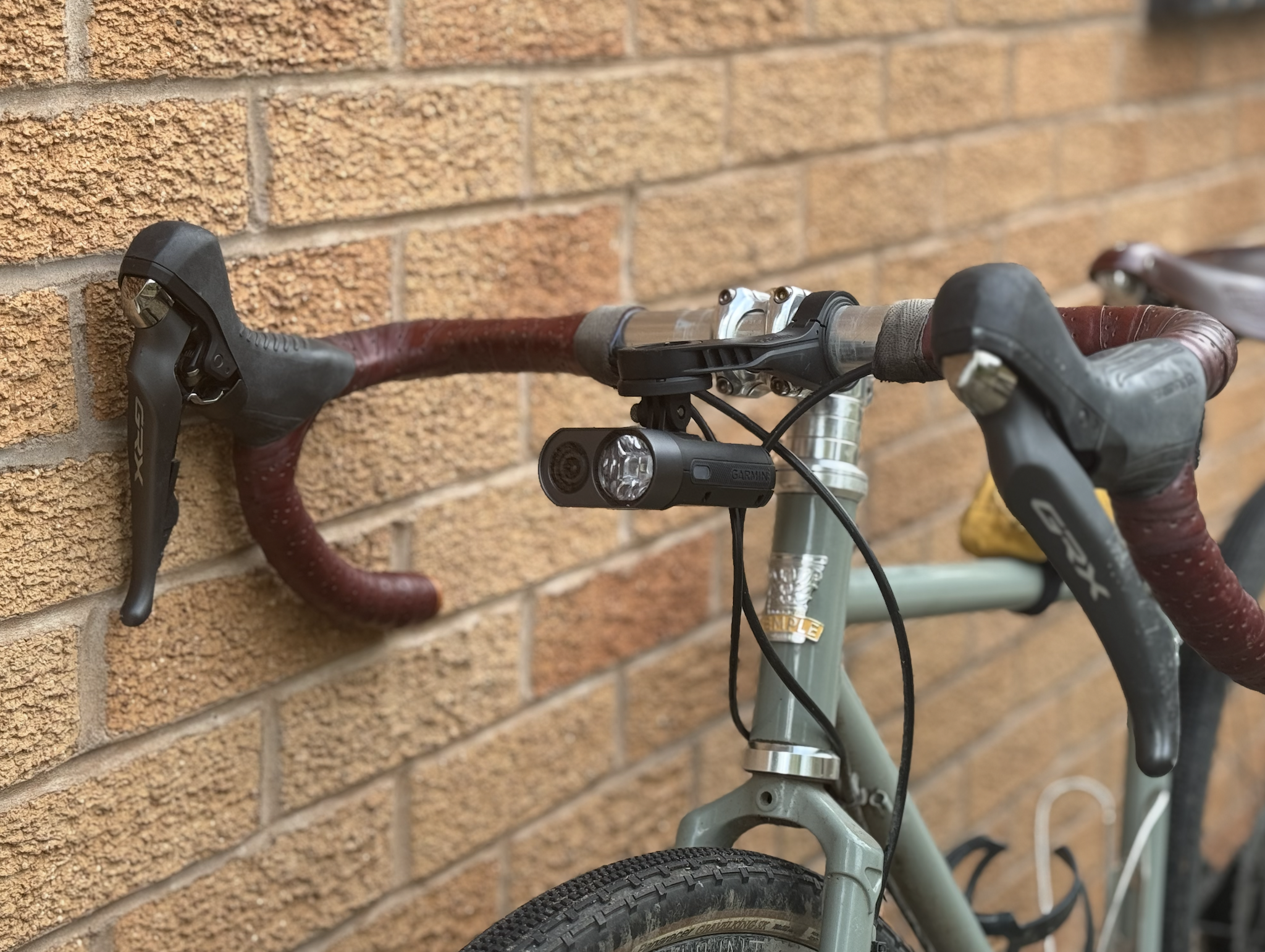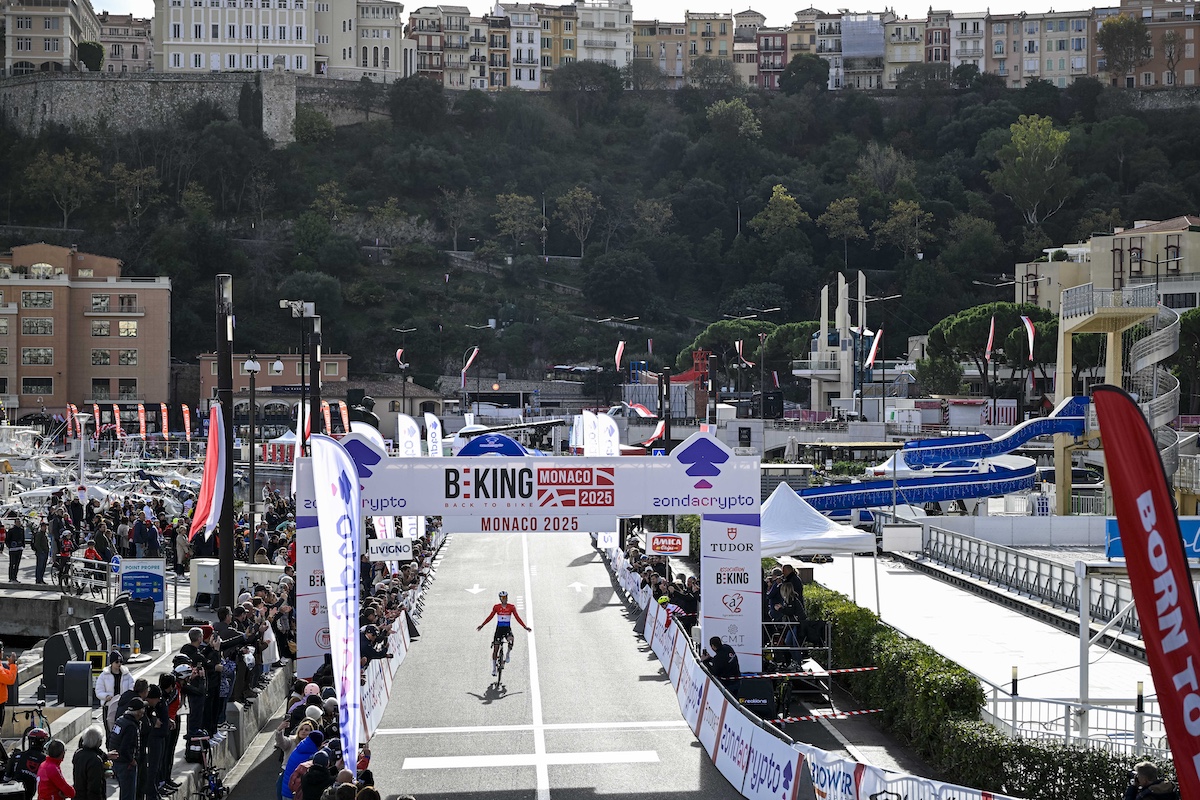Cyclingnews Verdict
The Varia Vue is ambitious in it's aims, and I am fully bought into the ethos of 'see and be seen'. However, with middling battery life, a less-than-impressive camera and infuriating connectivity problems, I can't help but feel the sky-high price promises a lot but under delivers. The Varia Vue might be attractive if you're already bought into the Garmin ecosystem but if you're not - I'm less convinced.
Pros
- +
Cut off beam, so StVZO compliant
- +
Impressive waterproof rating
- +
Lumens good for commuting and city riding
- +
Easy to mount
- +
Controllable from Garmin device and phone
- +
Potentially offers peace of mind
- +
Lots of camera modes to tailor your riding
- +
Good audio quality
Cons
- -
Incredibly expensive
- -
Some connectivity instability making it difficult to sync
- -
Camera quality isn't as great as it could be
- -
Battery life is just OK
- -
Not suitable if you use a front rack
- -
Dangle mount causes the footage to distort slightly
You can trust Cyclingnews
The best bike lights are increasingly expanding in terms of their remit; no longer is a light just for lighting up the road, instead they are promising to do more - integrated radars, GPS, apps, phone connectivity and incident detection - aiming to consolidate your cycling tech into a single convenient system. In an evolving market, Garmin has positioned itself as a serious contender with the Garmin Varia Vue Front Light.
I’m going to open this piece by sharing that the Varia Vue front lights have to be some of the most expensive lights I have ever been entrusted to review. At an eyewateringly expensive price tag of £450 with additional costs of SD cards, bike computers, and possible subscription, this is a serious investment. Combining a light with a safety camera is a nice idea, but it comes with a top-shelf price tag that means it has a lot to live up to.
As a cyclist, I have, like many others, experienced dangerously close passes and altercations with other road users that have shaken my enjoyment of the sport. The Garmin Varia Vue doesn’t prevent a collision, but does aim to provide peace of mind if something were to happen. Unlike mounting an action camera on your handlebars with limited battery life, Garmin has designed a system that can monitor your ride.
Garmin is not the first mover and shaker in this bike-light-slash-safety-camera realm; Cycliq has been a market leader for years and is able to produce something at a price point ever so slightly kinder to your wallet. That said, the Garmin Varia Vue does have advantages, particularly for cyclists already embedded in the Garmin ecosystem, offering integration with Garmin devices, apps, and radars.
So for such a hefty price tag, can it deliver?
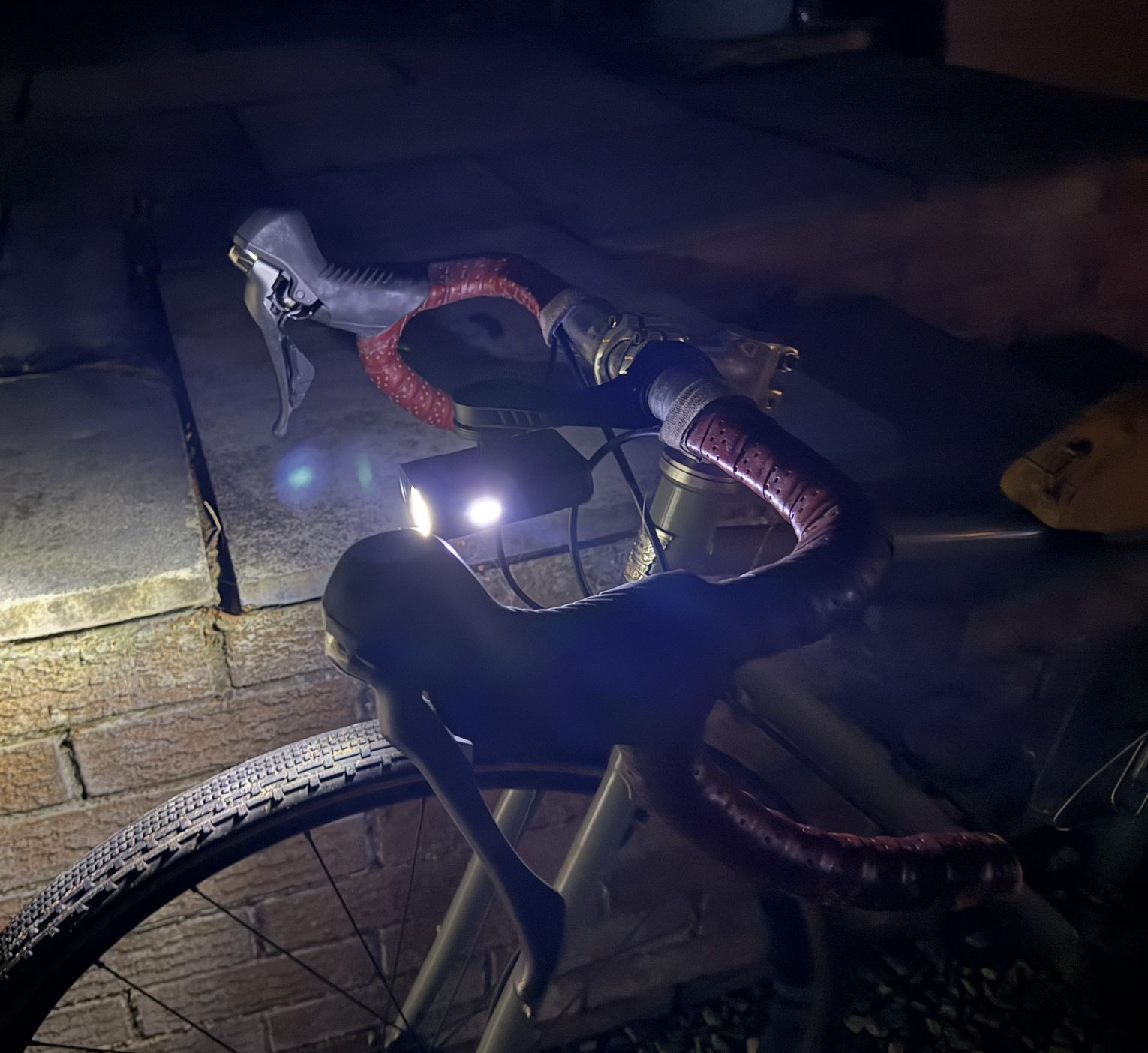
Design and aesthetics
The whole system works together to act a bit like a dashcam for the bike; the light element is just one part of the ‘see and be seen’ ethos Garmin has developed.
The Varia Vue front light is designed to work specifically with Garmin models 40 and 50 (that's the 540, 550, 840, 850, 1040, and 1050) but are compatible with other bike computers, including those from Wahoo, COROS, Fenix, as long as they support the ANT+ bike light standard. However, it is important to note that the camera’s functionality is limited when you’re using it with a non-Garmin computer. You’ll still be able to adjust light settings from the computer, but more advanced settings such as camera control, video clip saving and viewing all have to be done through the Garmin Varia app on your phone.
The latest race content, interviews, features, reviews and expert buying guides, direct to your inbox!
It’s also worth noting that Garmin’s system is modular. You can pair the front light with the Garmin RCT715 (£299) radar and camera sensor to provide you with an all-round camera experience, the slightly cheaper Garmin RTL515 Radar Tail Light to get just the alerts and illumination (£169.99), or the RVR315 rear view radar (£129.99) to just receive alerts. Though the costs can rapidly ramp up as you add extra bits and bobs, the flexibility does allow you to tailor the system to both a budget and level of security you feel most comfortable with.
Remember that you’ll also need to purchase an SD card which could add an additional £25 to the cost of the unit - a 32GB is probably an alright size for this as the Garmin Varia Vue records in a loop, rewriting old clips. To save clips from the unit, you’ll need to download the Varia Vue app on your phone, which will allow you to download or lock specific moments from being rewritten. For those wanting more of a cloud based storage solution to clip management, an additional subscription of £9.99 a month will offer automatic upload of all clips to the Garmin Connect app - well worth it if you’re doing a significant amount of riding, or daily commuting.
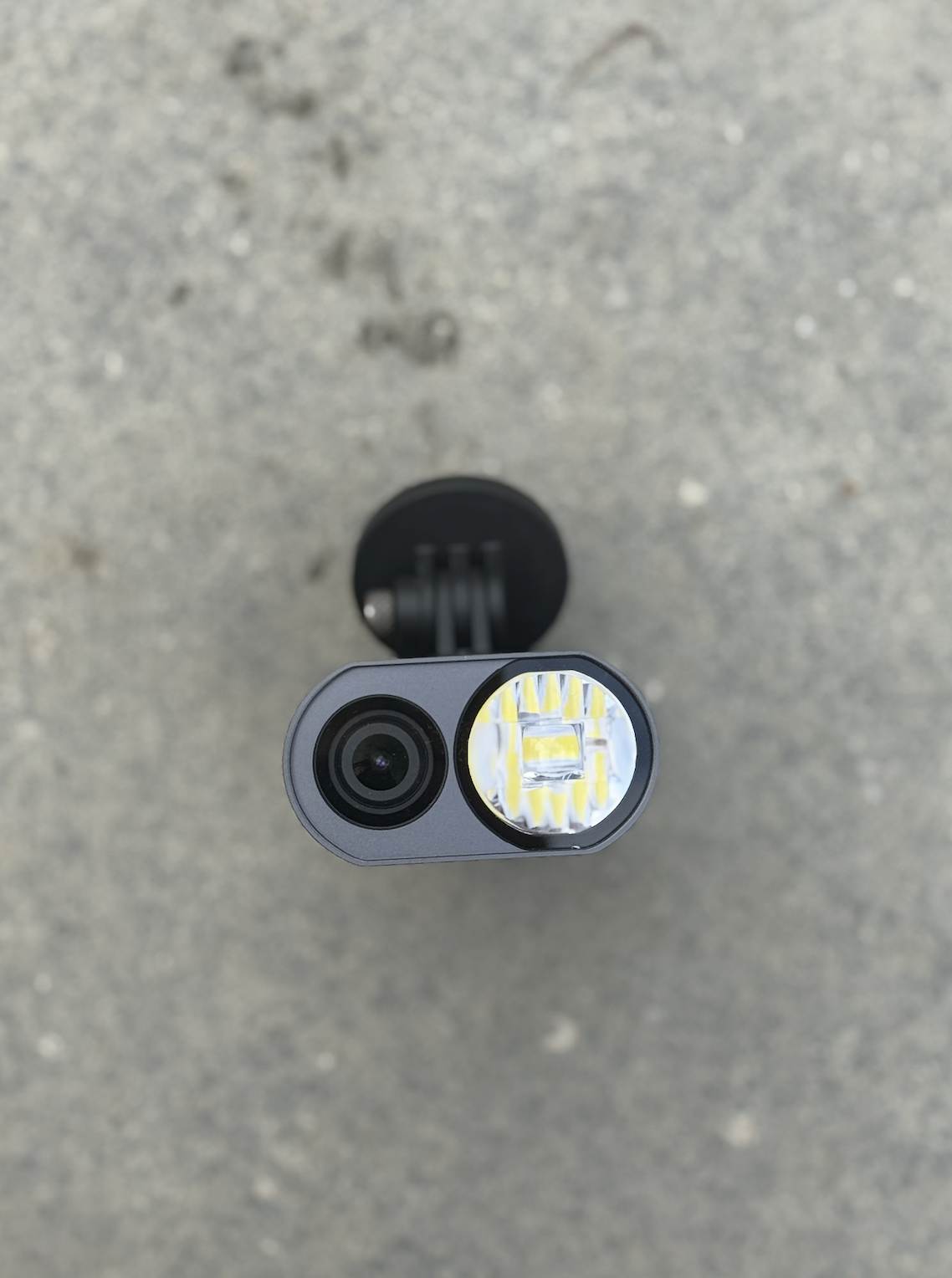
Straight out of the box, the Garmin Varia Vue is a smart looking light and camera duo. As a slim, rectangular bar with rounded edges, it is designed to look a bit more like a standard light than a camera, helping it to blend in a little bit more to your setup and making you a bit less conspicuous.
The light element and camera sit side by side, though with the light very slight setback for the camera to prevent the wide-angled lens catching any glare when switched on. Two smaller, indicator style lights add to the side visibility, and you have two discreet buttons on the side for power and connection to your phone and devices. From an accessibility perspective, these buttons do require some pressure to get them to work - great to prevent accidental power-on in bags, but not as great if you suffer with mobility issues or generally have numb and gloved fingers in the cold.
The Varia Vue front light is mounted beneath the standard Garmin mount, allowing you to have your bike computer and Varia Vue in one neat little space on your handlebars. During riding, it’s likely you’ll do most of your light and camera controlling from the Garmin computer itself, so the set up creates a nice centre of control for you. It also utilises a standard GoPro-style attachment should you wish to use any aftermarket mounts.
Weight wise, this entire setup is a bit hefty, so not one for those of you concerned about keeping things feather-light. The front light comes in at a whopping 200g, however, if you’re adamant that you want both a light and a camera on your bike an alternative set up of the Magic Shine ALLTY 1200 (for instance) and a Go Pro Hero 4K would work out 50g heavier. So, perhaps the convenience of it all rolled into one inconspicuous unit might make it worthwhile for you.
A quick note on the waterproofing - Garmin boasts an impressive IPX7 waterproofing on the casing, meaning that it can technically withstand immersion in 1m of water for up to 30 minutes. IPX7 is more than a match for cold and wet winter riding, even in torrential rain for hours on end, and so it's you who is likely to fail rather than the Varia Vue in those conditions. Not that I experienced any apocalyptic summer storms in the testing period, but I didn't worry once about getting caught in a downpour.
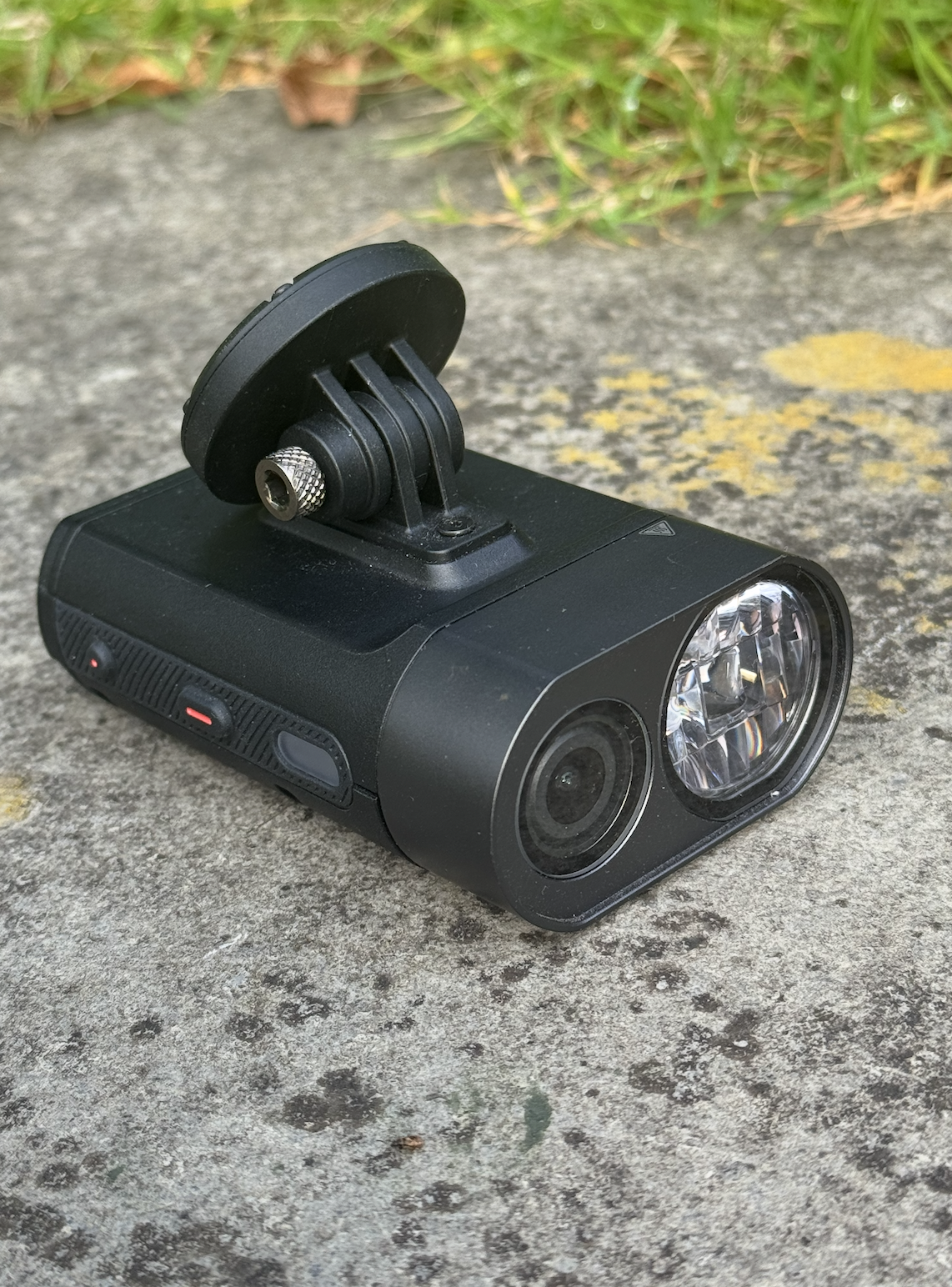
Set up
As expected with a techy product like this, there’s a bit of set up required before you’re able to use the Garmin Varia Vue. You’ll need to connect it to your phone and your bike computer (I used my Garmin Edge 540), as you’ll do all of your controls here.
In general I find Garmin devices are far from user-friendly, at least initially. There’s too many menus and options, and I don’t find using its user interfaces particularly intuitive, or even consistent across their models.
The Varia Vue app is reasonably well laid out however. I could, at least, navigate around it with ease and set things up the way I wanted them, which was a surprise. What was less of a surprise was that the gallery aspect of the app (where you would watch back your videos) is totally unusable without the light being switched on, connected to it and connected to WIFI, more than a bit annoying if you’re just wanting to check through bits of footage or just mess around with settings quickly.
Within the app you have full control of the camera and lights, including recording and resolution settings, and it’s where the clips are initially stored following a ride. From here you can download straight to your device, and do some light editing of the clips - including adding ride data. A word on the downloads however: it was an utter headache. I’d hoped it would be seamless - it is 2025 after all - but it wasn’t. The download kept dropping out, and it would take so long that often the light would die without me noticing before a video had fully downloaded. Perhaps my WiFi isn’t good enough, perhaps my patience isn’t long enough, but either way, I found it very annoying for a device costing almost £500.
Equally, I found that the longer I used the Varia Vue, the less reliable the network connection with my phone was. I was repeatedly having to ‘remove’ the device and re-pair it every time I wanted to use it - which frankly made me not want to use it at all and reach instead for other lights that didn’t need 20 minutes of admin just to get them usable.
I didn’t feel the need for a Varia Vault subscription, which was a nice departure from other tech that locks essential features behind a paywall. While automatic uploads can be useful, I didn’t store enough clips to make it necessary within the testing period. Most of my riding is on quiet, semi-rural roads in England, so my incidents with cars are thankfully few and far between, but in busier towns or cities I imagine the benefits of easy storage would be much more pronounced.
The light
Much of this review has, and will, focus on the camera and recording element of the Varia Vue. However, a core component of this system is the ‘see and be seen’ ethos, and for that, we do temporarily have to turn our attention to the light.
Like most standard lights, you get your five modes: high, medium, low, and day and night flash. As the camera is paired to both your phone and / or your Garmin, you have to use the app and / or your Garmin computer to control the settings which I found a little bit less convenient than just clicking a button on the device to scroll through the settings, especially when I was navigating with said Garmin, and therefore having to flip through different screens. I personally really liked to use the auto brightness control setting, which adjusts the light intensity based on speed and conditions (light shines brighter at higher speeds, dimmer at lower speeds), though this did have an impact on the battery life and is only controllable with a Garmin Edge computer.
The brightness of this light is at the lower end of what I feel is acceptable in a bike light, at up to 600 lumens in the dayflash (which actually was very bright). ‘High’ steady mode only offers you 550 lumens, which is probably just ok in urban areas, but a bit weak on very dark country lanes or trails.
However, we must remember that lumens aren’t everything in terms of visibility, particularly if you’re more concerned about being seen on the roads: beam pattern and light colour also play a part. The cutoff beam Garmin has integrated reduces glare for oncoming traffic (happily avoiding further annoying drivers) and creates a cone of light that makes you both easier to spot and also StvZO compliant if you’re in Germany. Garmin doesn’t provide a visibility angle, but you’re offered a cone of light around your front wheel plus some small cut out ‘indicator’ style lights on the side. My handlebars are too large for these to be that useful, but In a smaller, nimbler road set-up, you might find they’re a nice addition.
The camera
With the light out of the way, we can now turn our attention to the more integral part of the ‘dashcam’ style unit, and the part that I think most cyclists are going to be keenly interested in for the price. Most accidents, if they are to occur, (and touch wood that they don’t ever for you), generally happen head on, or from the side at junctions. The camera, situated out-front, is designed to be surveillance for that event, as well as giving you some evidence of close passes from the rear, though these are theoretically also taken care of by the Varia RCT715 rear radar/light/camera.
I think we need to be very transparent about what the camera is and isn’t on the Varia Vue. It is not an action camera, and it would be unfair to review it as such. The camera, situated out-front and with a wide fish-eye lens, is designed to provide a clear recording if an incident were to occur, and for that I do expect crystal clear video and audio, high quality incident detection and a broad enough field of view. So does it live up to any of these requirements?
I will cut to the chase. Unless a car gets really super close to you, you’re going to struggle to get a licence plate reading, especially in the dark or in bright sunlight. Even on an ordinary, cloud filled day, the footage is slightly blown out, and you’re not always guaranteed a decent shot. This is in part due to the lack of image stabilisation at the higher 4K resolution, which sort of defeats the point of recording at a higher frame rate in the first place (especially as it drains the battery quicker), but is also just the nature of a front facing camera - the handlebars might not always be angled quite right to capture the shot in full. The only time I really got a good shot of a licence plate was while in stationary traffic and I was right behind the car. As soon as we pulled off, the recording pixelated and it became unclear.
However, in saying that, general footage from most rides is still reasonable and will capture enough of the context to show what has happened, but it’s hit or miss at exactly how much detail you’ll be able to see clearly. If you’re trying to record in the dark though, you’ll not see much at all - losing sharpness to fuzzy blackness beyond the pool of light.
The recordings, generally, will fall into 10 minute clips saved to the app. After a ride, you can have a look at what footage you’ve captured and ‘lock’ it, to prevent it from being written over in subsequent rides. Theoretically this is a great idea. In practice, however, trying to find one close pass amongst a 2 hour ride consisting of 12 different 10 minute clips of sort-of-fuzzy-ish drivers was like searching for a needle in a haystack, and I quickly stopped bothering.
Though it’s not in scope for this review, I tested the front headlight alongside the RCT715 (£299), which helped build a sort of 360 degree system for collision detection and I felt bolstered the front light’s poor camera quality a bit, and made me feel like I had a few more eyes on the road. However, would I want to pay an extra £299 just to make my £450 headlight feel like it was working properly?
The battery life
You’re probably going to be unsurprised to find that recording in 4k, on continuous mode with the light on high 550 lumens is going to drain your battery like nothing else. At this setting, you’re looking at about 1.5 hours of battery life, maximum, which isn’t really optimum. Reducing the resolution down to 1080p, and dropping the lumens will stretch the battery life out, but even at its best the battery life is only about 9 hours. It IS significantly better than strapping a Go-Pro or other action camera to your handlebars though, so if you are adamant about the camera remaining on record throughout your rides, you're probably still better off with a Garmin Varia Vue.
Daily performance
To test the Varia Vue, I kept it mounted for all of my commute and shorter road rides, figuring that based on the battery life and proximity to road traffic, this is probably Garmin’s target usage.
One of the unexpected effects of having the Varia Vue constantly recording is how it shifts your awareness on the road. On one hand, it made me hyper-vigilant about every car that passed me, wondering whether or not the camera would catch that interaction - if there was one at all. This added a layer of stress initially that I did find a bit unsettling. However, on the flip side (and perhaps in almost direct contradiction), I did feel a peace of mind of knowing if anything were to happen, I’d likely have the footage to prove it. Of all the bits of tech I’ve reviewed over the years on a bike, the Garmin Varia Vue did noticeably change how I felt on a bike.
Perhaps understandably, the testing of this light sparked a number of conversations with friends who were curious and interested in how the system worked. Ask any cyclist and I think they’d almost certainly agree that footage of an altercation would be useful, and many of them seemed to feel that the peace of mind the Varia Vue affords perhaps negates its hefty price tag considerably. However, for me, there were just one or two many things not-quite-perfect about the setup that I wished could be tightened up before I could give it a full five stars.
Firstly, the mounting of the headlight, though a good idea initially, begins to throw up more problems than it solves. Though the Garmin mount keeps your handlebars uncluttered, the unit is hung by the top and so can act as a pendulum. Despite tightening the connecting bolt properly multiple times it had a habit of coming loose and free-swinging. As it is connected by simple plastic attachments, there’s also no attempt at vibration dampening, and it absolutely contributes to the poorer-than-expected video quality. To me, this seems a bizarre oversight that could be easily remedied with the ability to tighten up the seating angle of the light itself to keep it secure and less prone to jumping on rugged periods of tarmac.
Additionally, I was disappointed to find that the seating of the Varia Vue front light - dropped down beneath the handlebars under a Garmin mount - limits your real estate extensively on the bike. Almost all of my riding, whether commutes, trips to the shops or weekend bikepacking, is done with a front rack and pack, which becomes entirely impossible with the bike light mounted in this way. You simply can’t fit both a loaded pack and the Varia Vue at the same time, and actually you’re even going to struggle with a slightly bulging handlebar bag. I know I have a niche setup, and not everyone uses their bike in quite the utilitarian way that I do, but this does largely restrict the versatility.
And speaking of versatility, this isn’t the light I would recommend for an all-day (or multi day) adventure. At full charge, I only managed 5 hours of light at 550 lumens on dayflash, which is just shy of the 7 hours that Garmin state - and that was on the lowest resolution and on ‘radar’ sensor. This might not be such a big deal if you’re using it for commutes or shorter training rides, but it does mean you’ll need an additional battery pack (or even additional lights) if you’re the more adventurous-y sort. Generally I felt that I was always charging - or thinking about charging - my Garmin equipment. There’s no quick-glance battery indicator on either of the devices, which means you’re constantly having to connect them all to see whether they’ll get you through a ride.
Consequently, I do feel I have to point out the ‘admin fatigue’ involved in using these the Garmin Varia Vue on a daily basis.The upkeep in charging of the front headlight (and the RCT715 if you’ve chosen to turn this into a system), your phone and your garmin navigation device, making sure all of them are connected and set up correctly, which as mentioned, isn’t always straightforward, and then remembering to remove them again if you stop at a cafe or a shop does wear thin at times. At home, you’ll need to ensure all devices are updated to ensure you’re getting the best use out of them. You’ll need to download and save your videos in case you need them for the future as otherwise the Varia Vue will eventually record over them. Sometimes I just want to go on a bike ride and click a button for a dayflash on a light and be done with it all.
Despite the negativity though, I do have to admit that one of the best things about the Varia Vue is that you can keep it on continuous recording. Provided your connectivity is stable, much of your riding gets captured automatically and saved. I particularly appreciated how well it recorded audio with minimal wind distortion, though I’ll admit most of my clips ended up featuring some less-than-stellar Taylor Swift renditions. The flexibility to adjust recording resolution was another highlight, letting me balance battery life with footage quality. I didn’t notice enough quality difference between the resolution modes to worry about obsessively recording in 4K, and reasoned that the improved battery life made more sense to preserve for longer rides than footage fidelity.
Verdict
Writing this review has been tricky, and condensing my thoughts into a single section is even harder - I feel like I am conflicted. One of my biggest hesitations in awarding a higher rating comes down to the basics: the camera quality, battery life, and connection issues all leave a lot to be desired, especially at this price point. The concept is great and it does bring peace of mind to riders and their families, but it’s far from perfect.
On the positive side, the Varia Vue is far more practical than simply strapping a Go-Pro to your handlebars, with continuous recording and integrated bike light controls. I loved that it provided an additional pair of eyes while on the road. If I had to sum it up in a couple of sentences: it’s an alright system, especially for those already deep in the Garmin ecosystem and comfortable spending a fair amount of money.
That said, for the Varia Vue to feel truly complete, you’re looking at multiple pricey additions: SD cards, possibly the rear camera, and a compatible Garmin Edge for full functionality. It’s a steep price to pay, and I’m still not convinced that I’d use it regularly enough to be worth the price - especially with the connectivity issues and constant charging required.
But perhaps the peace of mind you achieve from this system has no price? Part of my hesitation is, I think, that I wanted the Garmin Varia Vue to be the solution to cycling safety, and ultimately I have to accept that it isn’t, and won’t ever be. Instead, the Varia Vue offers an integrated system that helps you keep another eye out for trouble, and maybe that’s enough.
Design and aesthetics | Well designed and well made, though the mount doesn't seem to stay in place. | 9/10 |
Camera | Not stable enough to see registration plates with any reliability. Not helped by the wobbly mounting. | 4/10 |
Light | This is ok, but not as good as a dedicated light outside of day flash mode. | 6/10 |
Battery life | Enough for a commute, but for longer riding you're either sacrificing battery life or video quality. | 5/10 |
Value | This is a very expensive bit of kit and it hasn't delivered great value. | 6/10 |
Total | Row 5 - Cell 1 | 60% |
You must confirm your public display name before commenting
Please logout and then login again, you will then be prompted to enter your display name.
